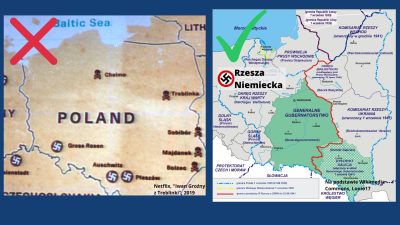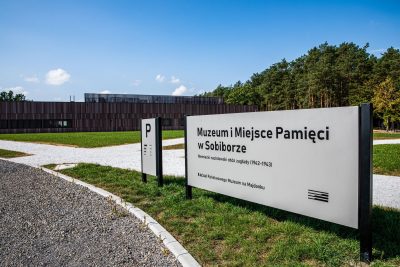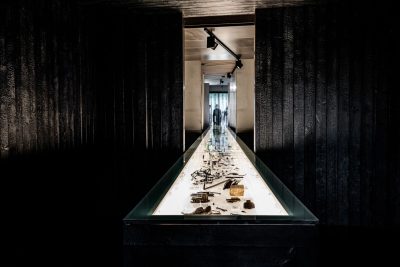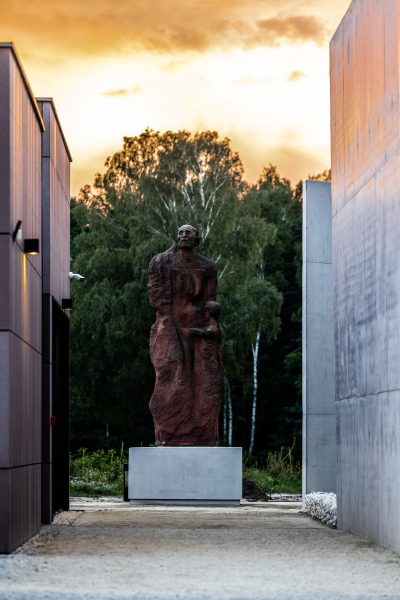“The map is not only inaccurate, but it also misleads viewers by suggesting that Poland was responsible for establishing and operating these camps, as well as for the crimes committed there,” wrote Polish Prime Minister Mateusz Morawiecki in a letter addressed to Netflix CEO Reed Hastings in 2019 to express his concerns regarding a misleading mapfeatured in the series The Devil Next Door.
The map marked the locations of German Nazi extermination camps within the borders of contemporary
Poland, potentially implicating the Polish nation in crimes committed during World War II.
The series ‘The Devil Next Door’ (titled Iwan Groźny z Treblinki in Polish) follows the story of Ukrainian-born John Demjanjuk, a former Red Army soldier who, after being captured by the Germans in May 1942, became a guard at the Sobibor extermination camp.
The first episode of the series shows a map of modern Poland, with extermination camps such as Auschwitz, Sobibor, and Treblinka marked within the country’s current borders. This depiction sparked protests from Polish officials, who feared that international audiences unfamiliar with the historical context might wrongly conclude that Poland or its people were complicit in the camps’ operations. In response, Prime Minister Morawiecki reached out to Hastings, urging Netflix to address these
inaccuracies.
“I wrote a letter to Mr. Reed Hastings regarding historical inaccuracies in some of the platform’s productions. These might seem like minor mistakes to the creators, but they are very harmful to Poland, and it is our duty to respond firmly. I hope my arguments will be understood by Netflix’s management,” the Prime Minister remarked.
In his letter, Morawiecki stressed that placing the names of Nazi extermination camps on a map of modern-day Poland could misleadingly imply that “Poland was responsible for the death camps, whereas in reality, the country was occupied by Germany during World War II.” He included with his letter a 1942 map of Europe and a testimony of a Polish officer Witold Pilecki, who voluntarily entered Auschwitz to document German atrocities.
The Prime Minister’s letter gained significant attention from major global media outlets, including the BBC, AFP, Reuters, The Telegraph, and The New York Times. Reuters reported that Morawiecki had “pressured” Netflix to amend the documentary. Meantime, AFP cited an anonymous Netflix consultant who confirmed that the company viewed the matter as a
“priority” and had “no intention of causing offense.” The Chicago Tribune noted that Morawiecki’s letter contained “strong words,” as reported by Polish news site onet.pl.
The Auschwitz Museum also responded, criticizing the map’s historical inaccuracy on platform X:
“Devil Next Door [sic] tells an important story. However, not only it shows
a map of Central Europe with post-war (not war-time occupation) borders
but also the locations of Chelmno and Majdanek camps are simply wrong.
One could expect more accuracy in such a production.”
https://x.com/auschwitzmuseum/status/1193613471113457664
The Polish Ministry of Foreign Affairs echoed this criticism: “@NetflixPL, let’s uphold historical truth! During the period depicted in
The Devil Next Door, Polish territory was under occupation, and responsibility for the camps lay with Nazi Germany. The map shown in the series does not reflect the borders of that time.”

Protests Lead to Change!
As The Guardian reported: “Netflix is to amend its Holocaust documentary The Devil Next Door, amid criticism from the Polish
government about maps that located concentration and extermination camp swithin the country’s current borders ”.
( htpps: www.theguardian.com/tv-and-radio/2019/nov/15/netflix-to-amend-
holocaust-documentary-after-complaints-from-polish-government)
Netflix issued a statement affirming its support for the documentary’s creators while also acknowledging the necessity of providing viewers with additional context:
“We are hugely proud of The Devil Next Door and stand by its filmmakers, their research and their work. In order to provide more information to our members about the important issues raised in this documentary and to avoid any misunderstanding, in the coming days we will be adding text to some of the maps featured in the series.”
“Mistakes are not always made in bad faith, which is why it’s important to have constructive dialogue about correcting them. I am grateful to Netflix and my team for helping to resolve this issue quickly and effectively,” Poland’s Prime Minister stated on Facebook.
Ultimately, Netflix added a caption to the maps reading: “German Camps in WWII Occupied Poland.”
Edited by ih
History of the Sobibor Camp
The German Nazi extermination camp at Sobibor was established between April and May 1942. The camp was initially divided into three sections, which included barracks for SS personnel and guards from the SS- Wachmannschaften formations, as well as facilities for Jewish prisoners.
Additionally, warehouses were constructed to store the belongings confiscated from the Jews brought to the camp. In a separate area known as Camp III, a gas chamber was built, where victims were killed using carbon monoxide produced by an engine, mirroring the method used at the Bełżec extermination camp.

Museum of the Former Death Camp in Sobibór
Throughout its operation, the camp was staffed by 51 Germans and Austrians, supported by a guard company consisting of 120 to 150 men,primarily former Soviet prisoners of war.
The first transports to the camp likely arrived at the end of March or early April 1942. By May of that year, a systematic extermination process began, lasting until the end of June. Jews from various German-occupied regions of Poland were transported to the camp, alongside arrivals from Austria, Germany, the Czech lands, and Slovakia.
Initially, the gas chambers were housed within a wooden barrack. However, between June and September 1942, they were completely reconstructed into a brick building with eight rooms, connected to two engines that pumped lethal gas, with the killing process lasting approximately 20 to 30 minutes. Prior to being led into the gas chambers, women had their hair cut off in a designated barrack situated along the path to the chambers.
A select group of Jewish prisoners (numbering between 600 and 700 men and women) were forced to work in the camp. Some were tasked with burying the bodies of the murdered, while others sorted through the victims’ belongings or served the SS and guard staff. Regular selections were conducted among these prisoners, with those who were killed being
replaced by new arrivals.

Museum of the Former Death Camp in Sobibór
Initially, the bodies of the murdered were buried n mass graves in Camp III. However, in late autumn 1942, the practice of cremating bodies commenced at Sobibor and continued until the camp’s closure. The bodies were incinerated on grates constructed from railway tracks.
It is estimated that approximately 180,000 Jews were murdered at the Sobibor extermination camp, with more than half being Polish Jews. The remainder comprised citizens from various European nations occupied by the Third Reich. While transport lists recorded the names of victims from Western Europe, no such records were maintained for Polish or Belarusian
Jews deported to Sobibor.

Museum and Memorial in Sobibor
In the summer of 1943, a group of prisoners began organising resistance in anticipation of the camp’s potential liquidation. Preparations for the uprising intensified when a group of Jewish Soviet POWs was selected from a transport arriving from Minsk, whose military experience provided hope for a successful revolt. The resistance movement was led by two individuals: Leon (Lejb) Feldhendler, representing the so-called “old prisoners”—mainly Polish Jews—and Alexander Pechersky, who led the
group of Soviet POWs.
On October 14, 1943, an uprising erupted within the camp. After killing several SS members and guards, a significant number of prisoners managed to escape although the revolt did not extend to Camp III. By the end of the war, only 50 individuals from the group of rebels had survived.
Following the uprising, the Germans resolved to dismantle the camp, employing Jewish prisoners transferred from the Treblinka extermination camp to deconstruct the barracks and gas chambers. After completing this task, these workers were executed.
Based on the website Museum and Memorial in Sobibór
Museum website in English: https://www.sobibor-memorial.eu/en

COMMENTS